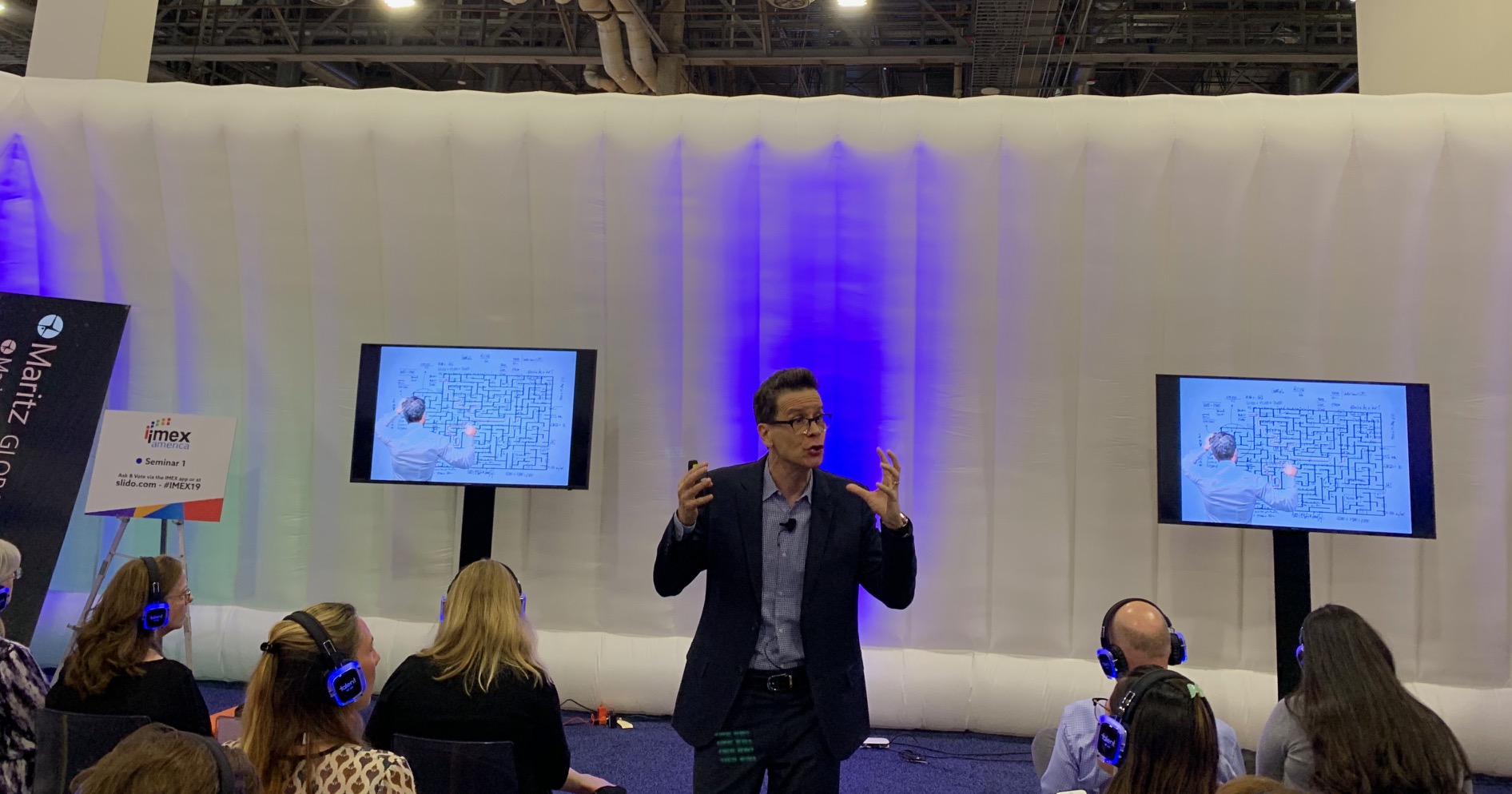High energy but rational: That's the way Tim Sanders delivers his presentations, and it's also how he recommends that planners build out meetings when a group needs to move innovative ideas towards real-world execution.
Sanders—Yahoo's former chief sales officer and author of the bestselling book Love Is the Killer App—told planners this at IMEX America 2019: When attendees know that your meetings are where ideas get their proper due and where actionable solutions for business problems are created, those attendees will trust the process and arrive on site ready to contribute, listen, evaluate, and then buy in.
"Problems get solved through conscious collaboration, and employee satisfaction is higher when that is the process," he says. "Collaborating early on, rather than as a last resort, and gathering perspectives from every department and customer segment with a stake in the project builds a culture that's not only effective and productive, but one that people want to be part of."
How to Do It
At the heart of conscious collaboration is the idea that people from disciplines outside that of the direct project team can provide information, expertise, and perspective that nobody else in the room has. Because of this, a solution might be developed that was never even considered in the past—a solution thought up by an outside person or by a project team member who applies the new information creatively to the team's existing knowledge.
Here's another example of how conscious collaboration can lead to effective problem-solving: For many business issues, the finance department will eventually be involved in whatever solution is chosen. But when a finance person is brought in during the idea-generation process, new possibilities come about. "If they understand the value of the project to the organization and become supporters of a proposed solution because they heard the full backstory, they might look around other areas of the business to find the money that solution needs if it's not there already," Sanders notes.
 What's more, giving a representative from each stakeholder group a legitimate voice right from the start is critical to finding the best possible solution and for getting buy-in across the organization. "If you simply push at a stakeholder one or two potential solutions that have already been chosen as finalists, you are not asking the stakeholder to collaborate—you're just asking them to cooperate," says Sanders (pictured here). "In turn, their support for whichever solution is executed will be shallow" and could derail the entire project at a challenging moment later on.
What's more, giving a representative from each stakeholder group a legitimate voice right from the start is critical to finding the best possible solution and for getting buy-in across the organization. "If you simply push at a stakeholder one or two potential solutions that have already been chosen as finalists, you are not asking the stakeholder to collaborate—you're just asking them to cooperate," says Sanders (pictured here). "In turn, their support for whichever solution is executed will be shallow" and could derail the entire project at a challenging moment later on.
Every two to three weeks throughout the initiative, the project team and other interested stakeholders should analyze the progress that came from acting on the decisions made in the previous collaborative session. Then, prioritize the problems or issues that should next be addressed, offer ideas for addressing them, rank those ideas, and execute the top-ranked ones. In short: Get input from all quarters; come to consensus; keep moving.
Lastly, Sanders emphasizes that conference calls are terrible for collaborative sessions unless all participants are visible to each other via video: "That brings focus as well as accountability."





